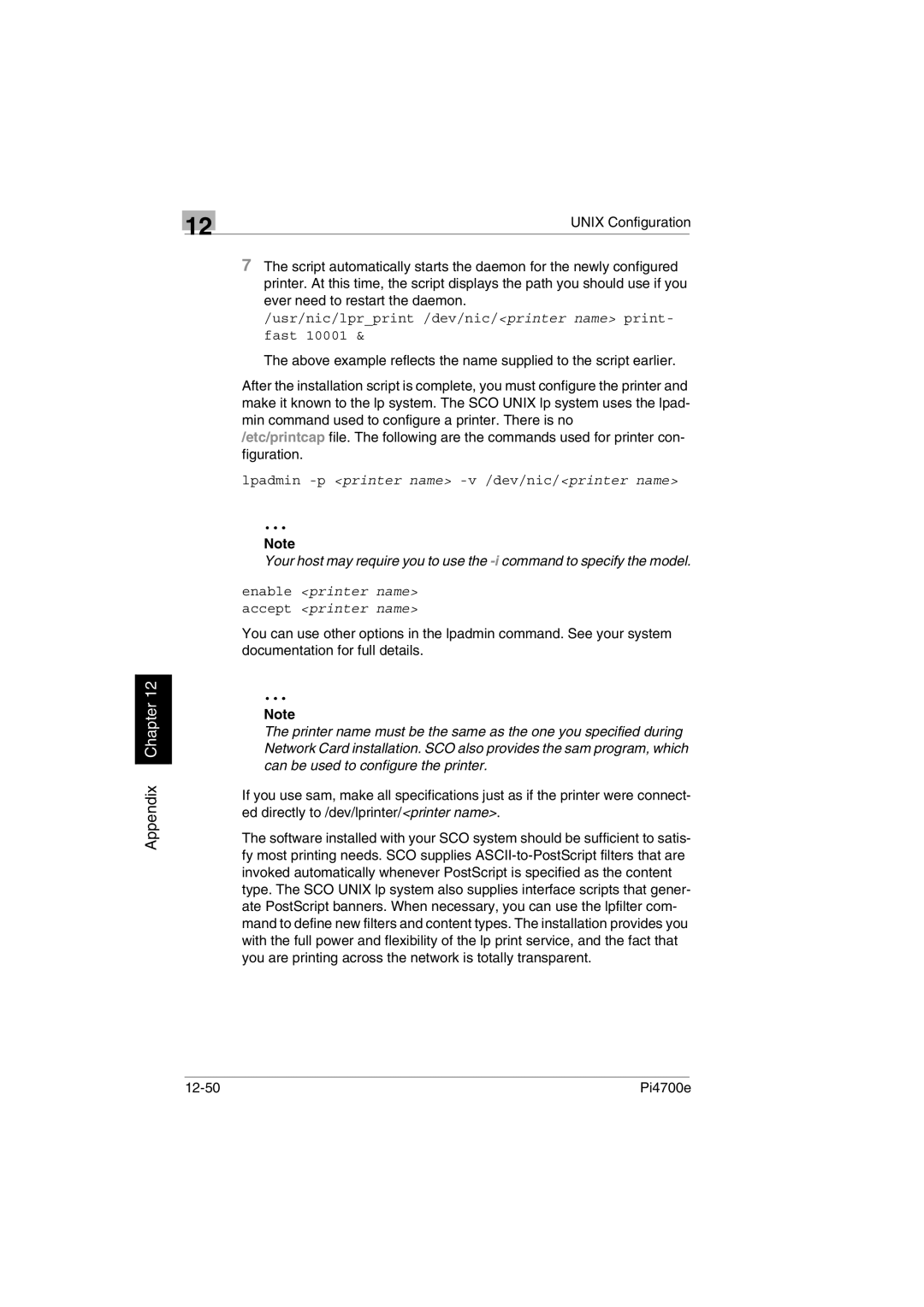
Appendix Chapter 12
| 12 | UNIX Configuration | |
|
|
| |
7The script automatically starts the daemon for the newly configured printer. At this time, the script displays the path you should use if you ever need to restart the daemon.
/usr/nic/lpr_print /dev/nic/<printer name> print- fast 10001 &
The above example reflects the name supplied to the script earlier.
After the installation script is complete, you must configure the printer and make it known to the lp system. The SCO UNIX lp system uses the lpad- min command used to configure a printer. There is no
/etc/printcap file. The following are the commands used for printer con- figuration.
lpadmin -p <printer name> -v /dev/nic/<printer name>
✎
Note
Your host may require you to use the
enable <printer name> accept <printer name>
You can use other options in the lpadmin command. See your system documentation for full details.
✎
Note
The printer name must be the same as the one you specified during Network Card installation. SCO also provides the sam program, which can be used to configure the printer.
If you use sam, make all specifications just as if the printer were connect- ed directly to /dev/lprinter/<printer name>.
The software installed with your SCO system should be sufficient to satis- fy most printing needs. SCO supplies
Pi4700e |
